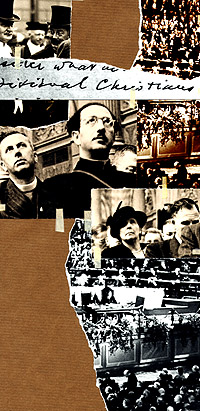
Moving clockwise from top left corner, the images are 1: Stockolm, Sweden,1925: Life and Work Conference; 2 & 4: Amsterdam, Netherlands,1948: Constitutional Assembly of the World Council of Churches: 3: 1938: Letter from Bishop Temple (Photos: WCC).
We find
In 1961 the WCC and the International Missionary Council, another pioneering impulse for Christian unity, merged. Ten years later the World Council of Christian Education officially became part of the WCC.
The theme of the Amsterdam assembly, "Man's Disorder and God's Design", was echoed in tones of confession and of hope in the message the delegates addressed to the churches.
They acknowledged honestly that human disorder was evident not only in the scars of the second world war all around them and the portents of cold war which lay ahead, but also in the pride, intolerance, power-seeking and discrimination that divided the one church of Christ.
Yet they insisted publicly on their intention to "stay together". Their message linked the faith of the church with its continuing quest for unity:
one
another
The WCC was an outgrowth of the ecumenical movement: the increasing number of initiatives in the early 20th century to overcome divisions among Christians. Two such streams flowed together to form the WCC: the Faith and Order movement, which dealt with doctrinal differences, and the Life and Work movement, which promoted cooperation and common reflection in the area of Christian social action.
We are divided from one another not only in matters of faith, order and tradition, but also by pride of nation, class and race. But Christ has made us his own, and he is not divided. In seeking Christ we find one another.